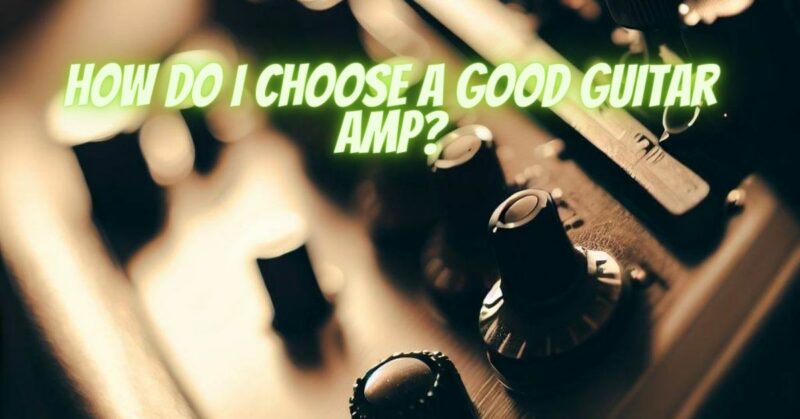Selecting the right guitar amp is a crucial decision for any guitarist, whether you’re a seasoned professional or a beginner embarking on your musical journey. The world of guitar amplification is vast and varied, with a plethora of options to suit different playing styles, genres, and preferences. In this comprehensive guide, we will explore the key factors to consider when choosing a guitar amp, ranging from the different types of amplifiers to the essential features that can significantly impact your sound.
Types of Guitar Amps:
- Tube Amplifiers: Known for their warm, organic sound, tube amps use vacuum tubes to amplify the guitar signal. They are favored for their natural compression and harmonic richness, making them ideal for various genres, including blues, rock, and jazz.
- Solid-State Amplifiers: Solid-state amps utilize semiconductor technology for amplification. They are generally more affordable and lightweight than tube amps, providing a clean and reliable sound. Solid-state amps are popular among players who prioritize portability and a consistent tone.
- Modeling Amplifiers: Modeling amps digitally replicate the sound characteristics of various amp models, allowing for a wide range of tones in a single unit. These amps are versatile and suitable for players who want to explore diverse genres without investing in multiple physical amplifiers.
- Hybrid Amplifiers: Combining the best of both worlds, hybrid amps integrate tube and solid-state technologies. They aim to capture the warmth of tubes while offering the reliability and efficiency of solid-state components. Hybrid amps are a compromise for those seeking a balance between tradition and modernity.
Key Considerations:
- Wattage: The wattage of an amplifier determines its volume and headroom. For bedroom practice, lower wattage amps may suffice, while gigging musicians may opt for higher wattage models to cut through a live band mix. Consider your intended use when selecting the appropriate wattage.
- Tone Controls: The tone controls on an amp (such as bass, mid, and treble) allow you to shape your sound. Look for an amp with a responsive and intuitive EQ section that complements your playing style and the sonic characteristics of your guitar.
- Built-In Effects: Some amps come with built-in effects like reverb, delay, and modulation. While this can be convenient, it’s essential to assess the quality of these effects and consider whether you prefer a separate pedalboard for more control and customization.
- Portability and Size: Consider the practical aspects of transporting and storing your amp. If you’re a gigging musician, a portable and compact amp may be preferable, while home players might prioritize features and sound quality over size.
- Speaker Configuration: The number and size of speakers in an amp can significantly impact its sound. A single speaker may provide a focused sound, while multiple speakers (in configurations like 2×12 or 4×10) can offer a broader sonic spectrum and enhanced projection.
Choosing the perfect guitar amp involves a careful consideration of your playing style, preferences, and intended use. Whether you opt for the classic warmth of a tube amp, the reliability of a solid-state model, or the versatility of a modeling amp, the key is to find an amplifier that complements your unique sound and inspires your musical creativity. By understanding the various types of amps and their features, you can make an informed decision that enhances your playing experience and helps you achieve the tone you’ve always envisioned.


